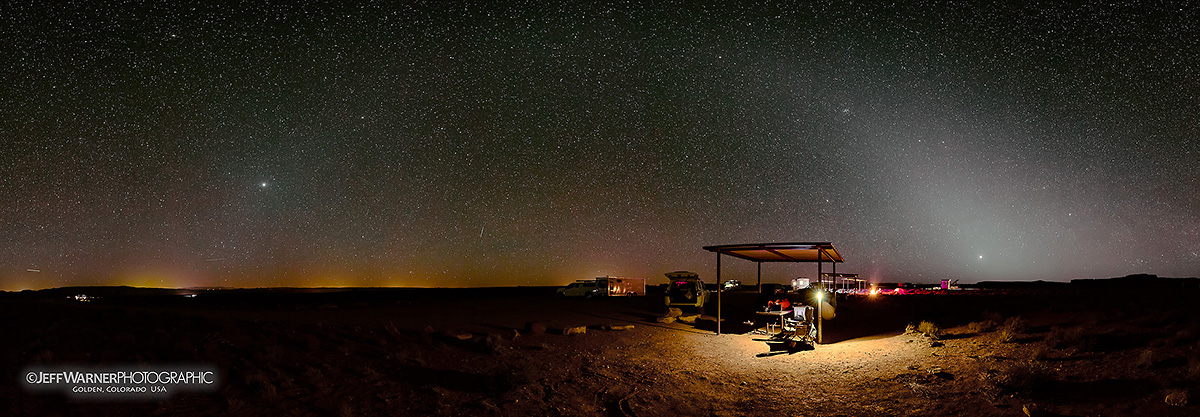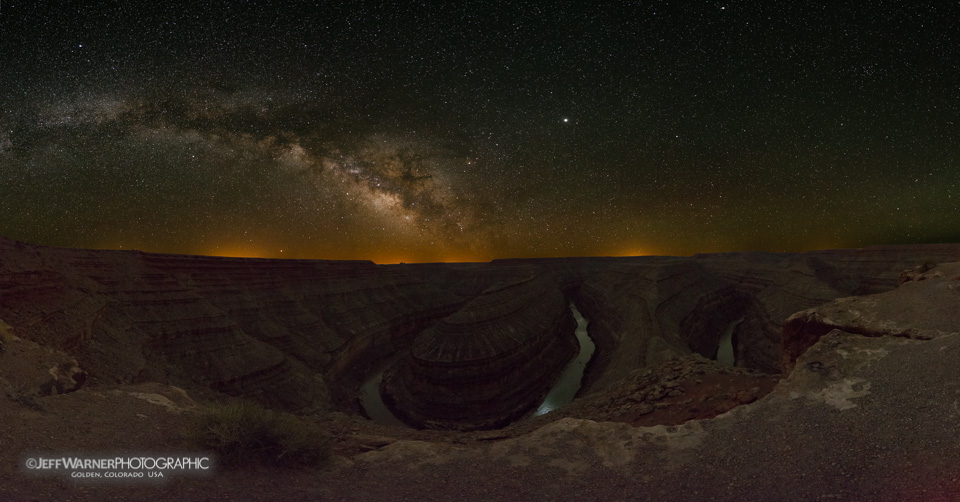As an illustration of just how dark it was during this New Moon cycle, on 5/14/18 I was camping at Goosenecks State Park and captured a test panorama sequence to look at Zodiacal Light, which is light from the sun being reflected by interplanetary dust in our solar system. You can only see this phenomenon (the bright ‘wedge’ of blue-grey light on right side, below) in dark sky locations. If it is very, very dark and the conditions are right, you can sometimes see the Gegenschein, back-scattering of the sun’s light off of the same dust, but on the side of our solar system not near the sun. While initially processing this panorama in daytime, I thought I could see the wedge of Zodiacal Light being ‘connected’ to the Gegenschein along the arc of the Zodiac, that is, the dust in the plane of the ‘disc’ of our solar system. Once I got home and was able to process the images on calibrated monitors, it became clear that I’d captured something I’ve never seen before: interplanetary dust within the entire visible plane of our solar system, from one horizon to the other. Even after searching on Google, I have not seen an image quite like this, nor one that captures this phenomenon using other than research-caliber equipment, often co-located with high-altitude telescopes or aboard spacecraft.
The panorama image below is facing south, and was stitched together using 13 vertical images, which comprises a view of approximately 180°:


And lastly, one of Goosenecks State Park. I hiked a few hundred feet down below the rim for a slightly different perspective, and I’m glad I did, as a small gaggle of tripod-ographers showed up on the rim above me, cackling and whipping flashlights around like they were light-sabers. I doubt they even knew I was there, as my process for capturing images on dark nights involves using only very, very low levels of lighting, and only while changing the direction of the camera during panorama captures (I typically also block the red light on the back of the camera so it does not reflect forward into the foreground, as red light is hard to correct in post).
The reflection of Jupiter can be seen in the San Juan River, below center:

Enjoy. I did.
